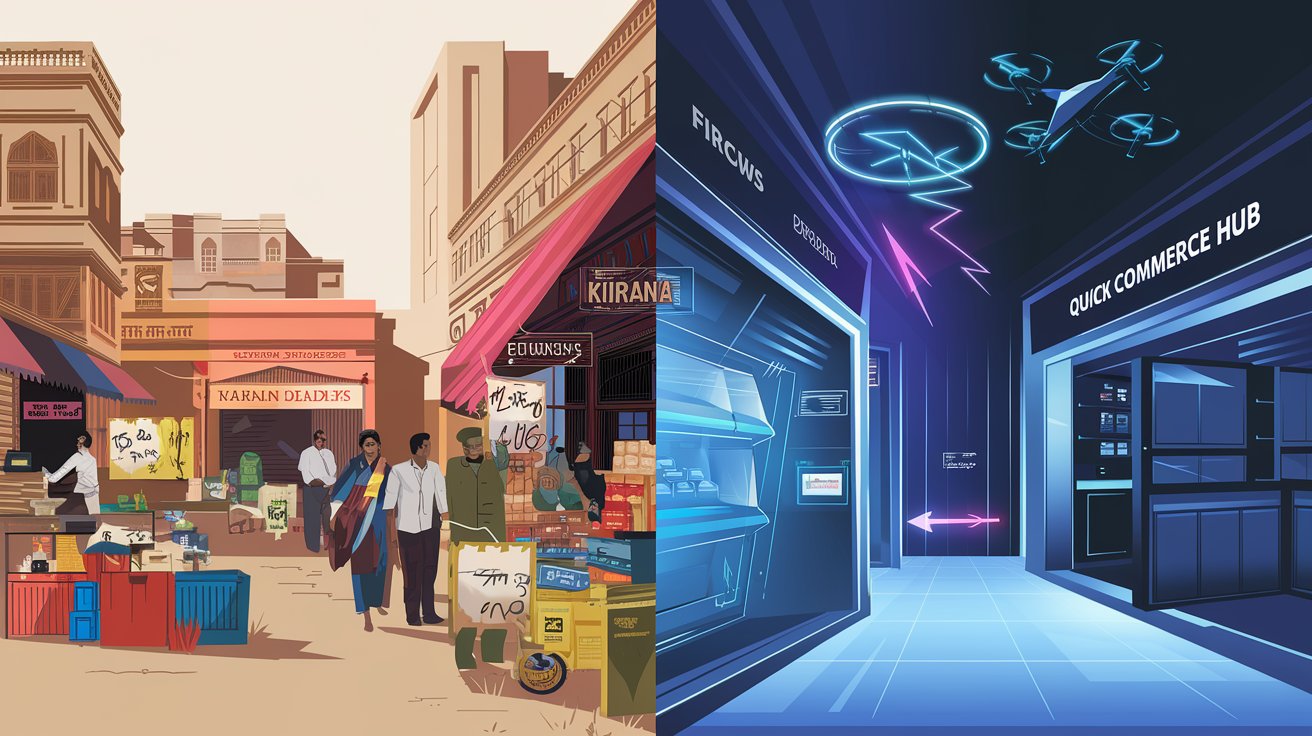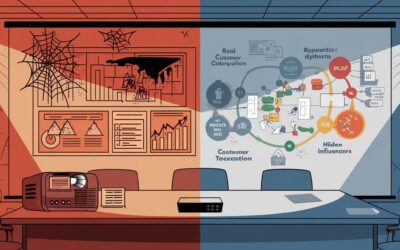For almost a century, General Trade (GT) – the good old Kirana stores of India – has been the backbone of FMCG distribution. Even today, it contributes a staggering 75% of total throughput, with Modern Trade at 9-10%, E-commerce at 6-8%, and the rest split across CSD (Canteen Stores), HORECA, and Traditional Wholesale.
But as we step into 2024, a new disruptor has emerged, shaking up the traditional retail ecosystem – Quick Commerce. 🚀
The Weaknesses of the Traditional GT Model
For decades, brands have relied on GT for mass distribution, but it comes with significant inefficiencies:
❌ Limited Shelf Space & Poor Product Visibility – Kirana stores operate with space constraints, leading to restricted assortment & inconsistent displays.
❌ Working Capital Constraints – Small retailers struggle with cash flow, limiting how much stock they can hold.
❌ Retailer Profit Over Consumer Choice – Many store owners push products with higher margins, restricting true consumer preference.
❌ Store Hygiene & Shopping Experience – While Modern Trade & Quick Commerce offer clean, standardized retail experiences, kirana stores often lack hygiene & ambience.
❌ Time Constraints & Delivery Hassles – Consumers face fixed store timings, and delivery dependability varies by locality.
These challenges have made GT less efficient, allowing new-age retail models to step in.
D2C Dreams vs. GT Reality
Many new-age brands launched as D2C-first have struggled to scale. Why?
✔ High cost of distribution – Margins, manpower, logistics, and retailer commissions add up.
✔ GT is vast and fragmented – Reaching the full metro + Tier 1-4 universe is costly and complex.
✔ Mamaearth is a case in point – A strong D2C success story, but struggled to transition into GT at scale.
For years, FMCG brands that dominated GT distribution had the upper hand, often using their extensive networks to arm-twist retailers, dictate margins, and control shelf space.
But that’s changing fast… 🔥
Enter Quick Commerce: The Game-Changer
At the start of this decade, no one could have predicted the meteoric rise of Quick Commerce. Today, platforms like Blinkit, Zepto, Instamart, Amazon Fresh, Flipkart Quick, and BigBasket Now are rewriting the rules of retail.
✅ 15000-18000 Dark Stores by end of 2025 across metros & Tier 1-4 ✅ 24×7 availability & ultra-fast delivery (under 20 mins!) ✅ Wide assortment & deep brand penetration ✅ Hyperlocal reach without massive manpower costs
💡 By 2030, Quick Commerce could command at least 50% of GT’s current share – a once-unthinkable reality.
Why Quick Commerce Wins?
🔹 No Shelf Space Limitations – Brands get equal visibility, avoiding retailer biases. 🔹 Better Inventory & Working Capital Management – With real-time offtake data, brands can optimize stock movement & reduce dead inventory.
🔹 Hygiene & Convenience – Consumers get fresh products, fast delivery, and a standardized experience.
🔹 Faster Decision Making – No dependence on wholesalers, distributors, or retailer push tactics.
The biggest shift?
📉 FMCG giants that leveraged their GT dominance to squeeze out smaller brands will lose their edge. With alternative retail channels flourishing, strong distribution alone will no longer guarantee market control.
The Future of FMCG: A Power Shift
For the first time in history, new-age FMCG brands can scale WITHOUT being held hostage by General Trade.
The perfect distribution mix by 2028?
📉 GT shrinks to ~35% 🚀 Quick Commerce rises to ~40%
🌐 The remaining 25% split across Modern Trade, E-commerce, CSD, HORECA & Traditional Wholesale
In this new era, brands will win not by sheer distribution strength but by solving real consumer problems.
💡 The lesson? Adapt or be left behind.
Final Takeaway
GT isn’t vanishing overnight, but its dominance is being challenged like never before. For FMCG brands, this is an opportunity of a lifetime.
If you’re an aspiring or established FMCG player, ask yourself:
➡ Are you Quick Commerce-ready?
➡ Can your brand thrive in an omnichannel world?
➡ Are you still relying on outdated GT distribution models to stay competitive?
The future is knocking. Are you ready to answer? 🚀💡
Would love to hear your thoughts! Drop a comment below on how you see the future of FMCG distribution in India. 👇🏼🔥
#FMCG #Retail #QuickCommerce #GeneralTrade #D2C #Ecommerce #RetailTrends #IndiaRetail






